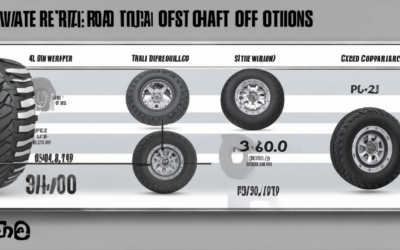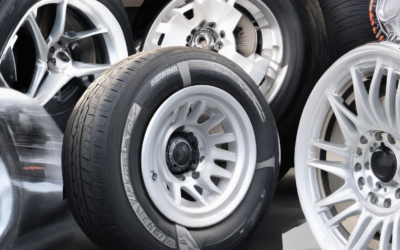Driving a car with unbalanced wheels can be frustrating and even dangerous, causing poor handling and reduced control on the road. Many drivers wonder if they can balance their car’s wheels themselves or if it’s better to visit a professional. In this guide, we’ll explore everything you need to know about balancing car wheels, including how to do it at home, when to seek professional help, and the costs involved. Whether you’re a car enthusiast or a first-time driver, this simple guide will provide you with the tools and techniques to maintain your vehicle’s stability and safety. By addressing the signs of imbalance and understanding the risks of driving with unbalanced tires, you’ll learn how to restore your car’s balance and enjoy a smoother ride. From DIY methods to expert advice, we’ve got you covered!

Can I Balance My Wheels Myself?
Yes, you can balance your wheels yourself, though it may require the right tools and knowledge. Here’s how:
Tools Needed
- A balancing machine or digital tire balancer
- Tire weights or chips
- Vehicle lifting equipment (if needed)
Steps to Balance Tires Yourself
- Remove the wheels from your vehicle
- Mount the balancing machine on the tire
- Use the machine to detect imbalances and apply weights
- Spin the wheel to distribute the weights evenly
- Reattach the wheel and test the balance
Considerations
- Professional services are often recommended for accuracy
- DIY balancing is feasible for basic issues but complex problems may require expertise
- Always consult a professional if unsure
Resources
For more information on wheel balancing and maintenance, visit our guide or explore our car maintenance tips .
Remember, proper tools and techniques are essential for effective wheel balancing. Always prioritize safety and consult a professional if you’re unsure about the process.
How to Fix a Wheel Balance on a Car
To ensure your car rides smoothly and safely, it’s crucial to maintain proper wheel balance. Here’s a step-by-step guide to addressing and correcting wheel imbalance:
Step 1: Understanding Wheel Balance
Wheel balance refers to the distribution of weight across all four wheels. An imbalance occurs when one or more wheels are heavier than others, leading to uneven wear and reduced handling performance.
Step 2: Identifying the Need for Balance
Symptoms of wheel imbalance may include:
- Uneven tire wear
- Shaking or vibrating steering wheel
- Difficulty controlling speed during acceleration or braking
- Nose diving or tail lifting during maneuvers
Step 3: Professional Inspection
For accurate diagnosis and effective correction, we recommend visiting a certified auto shop or tire specialist. They utilize advanced equipment like tire balancing machines to precisely measure and adjust each wheel’s weight distribution.
Step 4: Balancing the Wheels
Technicians employ two primary methods:
- Add Weight Plates: Small weights are attached to the rims of underweight wheels to redistribute the load evenly.
- Adjust Suspension Components: In cases of severe imbalance caused by suspension issues, components like shocks or struts may need replacement or adjustment.
Step 5: Regular Maintenance
Prolonged driving on uneven surfaces or poor road conditions can affect wheel balance. Schedule regular inspections, ideally coinciding with your routine oil changes , to prevent future issues.
Step 6: Considerations for DIY Enthusiasts
While possible, balancing wheels at home requires specific tools and knowledge. Risk of damaging your vehicle’s suspension or voiding warranties makes it advisable to leave this task to professionals.
Step 7: Cost and Convenience
Professional services vary in cost depending on the severity of imbalance and the shop. Compare quotes and check for promotions or discounts, such as multi-wheel balancing deals .
Step 8: Environmental Impact
When replacing tires or adding weights, opt for eco-friendly options. Many shops now use recycled materials and implement sustainable disposal practices.
Conclusion
Maintaining proper wheel balance ensures optimal performance and safety. By addressing imbalances promptly and utilizing professional services, you can enjoy a smoother ride and extend the life of your tires.

Can Wheels Be Balanced on the Car?
Yes, wheels can be balanced on the car, particularly in a workshop setting. Balancing a wheel involves adjusting its weight distribution to ensure optimal performance and stability. This process is often performed using specialized equipment like electronic balancing scales, which help determine if the wheel is properly aligned and balanced.
Steps to Balance Wheels on a Vehicle
- Place the Wheel on a Scale : Position the wheel on a balancing scale or digital weighing system designed for tires.
- Adjust Weights : Add weights to the wheel until it reaches equilibrium, indicated by the scale displaying equal left and right weights.
- Reinstall the Wheel : Once balanced, secure the wheel back onto the vehicle and test the ride to ensure smooth operation.
Why Balance Matters
Balancing wheels is essential for maintaining control, comfort, and fuel efficiency. Over time, wheels can become unbalanced due to normal wear and tear, changes in suspension components, or damage from road hazards.
When to Rebalance
Common reasons to rebalance wheels include: – Noticeable vibrations during driving – New tire installations – Suspected damage or uneven wear patterns – Changes in suspension settings
Tools and Resources
For those interested in learning more about wheel balancing techniques, tools like the Nitroshock Wheels balancing scale or Toyo Tires guide can provide valuable insights. These resources offer professional-grade solutions tailored for various vehicles and wheel types.
Always consult a certified technician for complex balancing procedures or if persistent issues arise. Proper wheel balance ensures safer driving conditions and extends the life of your vehicle’s suspension and tires.

How to Check if Your Wheels Need Balancing
To ensure your wheels are balanced, follow these steps:
- Visual Inspection: Examine the condition of your tires for uneven tread wear. Compare the tread levels on each side of the wheel. Uneven wear can indicate a balance issue.
- Driving Behavior:** Pay attention to how your car handles. If you notice vibrations in the steering wheel, pulling to one side, or difficulty in maintaining a straight line while driving, it may indicate an imbalance.
- Braking Patterns:** While braking, especially during hard stops, check if your car pulls to one side. This could suggest a rear wheel imbalance.
- Professional Diagnosis:** Use a balance scale or digital weight scale to measure each wheel’s weight. Imbalances will show up as differences in weight distribution.
- Consult Your Owner’s Manual:** Many vehicles come with guidelines on checking wheel balance or have tools built into their design to aid in this process.
- Visit a Trusted Mechanic:** If you’re unsure or notice symptoms, schedule an appointment with a qualified technician who can perform a thorough inspection and balancing service.
Additionally, many auto shops offer free balancing services, so check locally for deals. Regular maintenance can help prevent issues before they arise. Ensuring your wheels are balanced ensures optimal performance and safety on the road.
How Much Does It Cost to Balance Wheels?
The cost to balance wheels typically ranges between $40 and $75 depending on several factors:
- Location : Labor costs vary by region. In the U.S., prices may be higher due to higher labor rates compared to other countries.
- Vehicle Type : Costs can differ based on the type of vehicle. Cars, trucks, and SUVs may have different requirements and pricing structures.
- Wheel Size and Weight : Larger wheels or those with heavier builds may incur additional costs due to larger sizes and increased complexity.
If you’re looking for specific services, companies like Wheel Balancers Direct and Just Balance It offer competitive pricing and professional services. These providers specialize in wheel balancing and alignment, ensuring your vehicle runs smoothly and safely.
For DIY enthusiasts, purchasing a digital wheel balance scale and following online tutorials can save money. Platforms like YouTube often feature detailed guides on performing basic wheel balancing yourself.
Always compare local shops and read reviews to find reliable services. Whether you choose to hire a professional or tackle the task yourself, proper wheel balancing is essential for optimal performance and safety.

Can I Drive with Unbalanced Tires?
Driving with unbalanced tires can lead to several issues affecting both safety and performance. Here’s a breakdown of the potential consequences and recommendations:
- Handling and Stability Issues: Unbalanced tires may cause your vehicle to pull to one side, especially on uneven roads or during sharp turns. This can make it harder to control the car, reducing overall stability.
- Safety Concerns: The risk of accidents increases due to decreased control and stability. Poor handling can lead to skidding or loss of stability, particularly in emergencies.
- Maintenance Recommendations: Regularly inspect your tires for signs of uneven wear. Check tread depth and overall condition. If one tire wears faster, consider rotation or replacement. Refer to manufacturer guidelines for intervals.
- Causes of Unbalanced Tires: Factors include driving habits, road conditions, and vehicle setup. Sharp turns, bumpy roads, and incorrect suspension or alignment can contribute to uneven wear.
- Fixing the Issue: While adjustments or balancing agents may temporarily correct the issue, severe cases may require tire replacement. Consult a professional mechanic for a thorough assessment and recommendations.
- Replacement Timing: Address the issue promptly to prevent further wear and tear. Severe imbalances can reduce tire lifespan and pose longer-term safety risks.
Conclusion: Driving with unbalanced tires is not advisable due to safety hazards and performance degradation. Regular inspections and timely maintenance are crucial to ensure optimal driving conditions and longevity of your vehicle’s components.



0 Comments